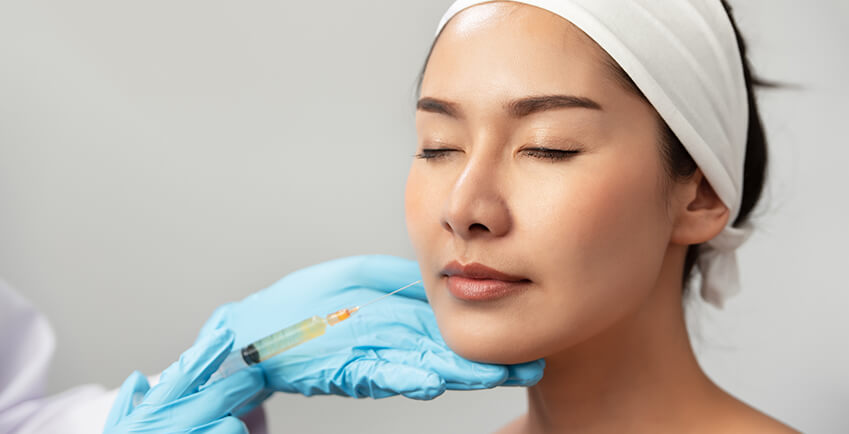In the past decade, dermal fillers have gone from being a celebrity beauty secret to one of the most common cosmetic procedures around the world. They promise fuller lips, smoother skin, and subtle facial enhancements all without surgery and minimal downtime. But with increasing stories in the media about botched results, filler dissolutions, or even rare complications like vision loss, question arise: Are fillers really safe?
This blog will unpack the latest scientific and clinical evidence to help you understand the risks, benefits, and best practices. Whether you are considering your first treatment or just curious, this guide will empower you to make informed, confident decisions.
What Exactly Are Fillers?
Fillers, also known as soft-tissue or dermal fillers, are injectable substances placed under the skin. Their main purpose is to restore lost volume, soften wrinkles, and reshape features like the lips, jawline, or cheeks. The most common type is hyaluronic acid (HA) fillers. HÀ fillers are temporary, reversible, and have been studied extensively. Other options include calcium hydroxylapatite, poly-L-lactic acid, and longer-lasting fillers, these are used less often due to higher risks over time. The safety of fillers depends not only on the type of product but also where it’s injected and who is performing the procedure.
Are Hyaluronic Acid Fillers Safe?
Hyaluronic acid fillers are considered the gold standard today. They have two major advantages
- Reversibility: If complications such as overfilling, unevenness, or blood vessel issues occur, HA fillers may be dissolved with an enzyme called hyaluronidase.
- Well-studied profile: Research shows that most side effects are mild and temporary (swelling, bruising, or tenderness). Serious complications are rare but possible.
Although no filler is completely without risk, HA fillers are among the safest when used by experienced professionals.
What About Under-Eye Fillers?
Tear-trough fillers, which are administered under the eyes, are considered a complex procedure due to the delicate nature of the area and the thinness of the skin. This can increase the likelihood of swelling, bruising, or a bluish tint (referred to as the Tyndall effect).
Research indicates that most patients report satisfaction with their results, though minor temporary side effects commonly occur. Serious complications, such as vascular events, are rare but possible. Therefore, it is recommended that under-eye fillers be performed by qualified injectors who apply conservative amounts and adhere to proper technique.
Are Lip Fillers Safe?
Lip fillers represent one of the most widely utilised filler treatments and are generally considered safe when administered using hyaluronic acid products. Common short-term effects include swelling, tenderness, and occasional bruising. Potential complications may involve:
Cold sore flare-ups in individuals susceptible to herpes simplex virus.
Lumps or asymmetry, which are typically resolved through massage or dissolution.
Inflammatory reactions (rare, with incidence rates below 0.5%).
Complications most frequently occur when procedures are performed by unqualified providers or when individuals attempt self-administration with DIY kits and “hyaluron pens,” both of which are strongly discouraged by health authorities.
The Rare but Serious Risk: Blindness
The most significant complication associated with dermal fillers is vascular occlusion, which may result in skin necrosis or, in exceptionally rare instances, blindness. This outcome can occur if filler material is inadvertently introduced into a blood vessel and subsequently migrates toward the ocular region.
Regarding incidence, research indicates that the risk of vision loss from hyaluronic acid fillers is less than 0.001% when procedures are performed by qualified professionals. These statistics underscore the importance of selecting an experienced injector and appropriate product.
What Makes Fillers Safe (or Risky)?
The outcome depends largely on these factors:
- Skill of the practitioner – Board-certified dermatologists and plastic surgeons know facial anatomy deeply and are trained to handle complications.
- Product quality – Always make sure FDA-approved fillers are being used from sealed packaging.
- Technique – Using cannulas, injecting slowly, and avoiding high-risk areas lowers the chance of complications.
- Emergency preparedness – Clinics should have hyaluronidase, antibiotics, and clear protocols in case of vascular issues.
Your Safety Checklist Before Getting Fillers
- Choose a qualified, board-certified provider.
- Confirm the filler is an approved brand.
- Ask about emergency protocols (do they have hyaluronidase?).
- Discuss realistic results and possible side effects.
- Share your medical history- autoimmune disease, history of cold sores, allergies, prior fillers
- Avoid cheap offers and unregulated products.
Bottom Line
Fillers can be a safe and effective way to refresh your appearance—but “safe” never means “risk-free.” Most people experience only temporary, mild side effects. Severe complications are rare, and their risk is dramatically reduced when procedures are performed by trained specialists using high-quality products.
If you’re considering fillers, the smartest step is not to hunt for the cheapest option, but to choose the most qualified injector. In the right hands, fillers can offer natural, satisfying, and safe results.
Author: Dr. Viral Kumar Patel
Disclaimer : The opinions here are personal views of the authors. IAAPS is not responsible. All members may not have the same scientific view point

